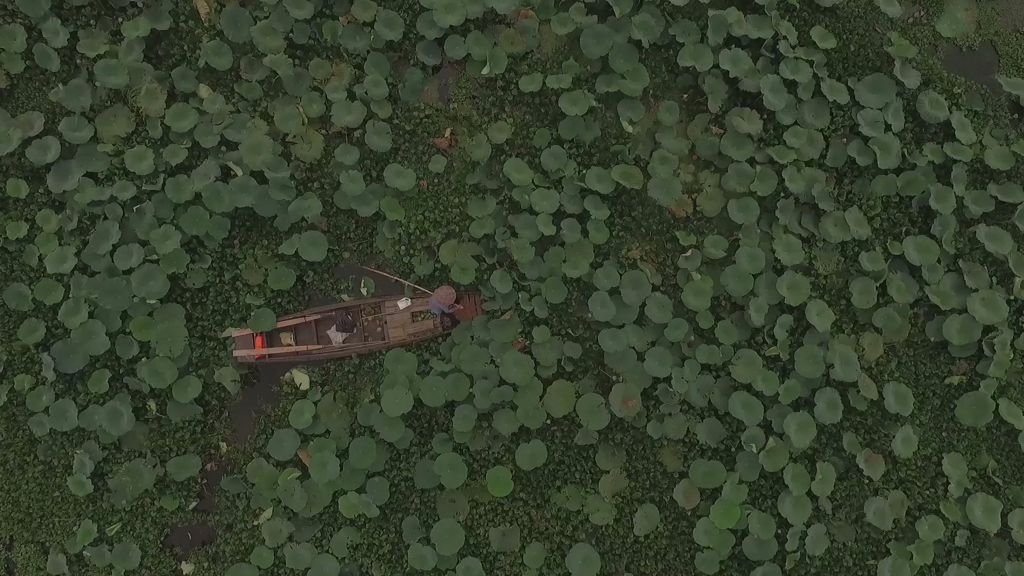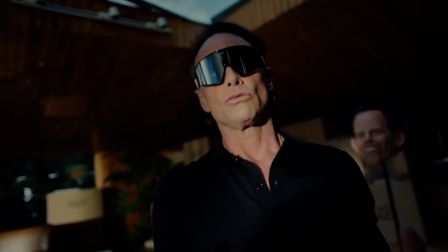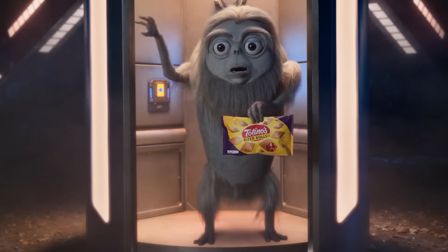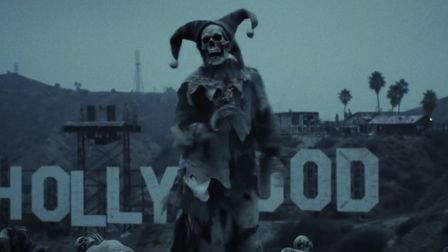JWT Brings The Yangtze River to The Sky
Teaming up with HSBC and WWF, JWT has created an audio installation at Gatwick’s Skybridge.
Credits
powered by
- Agency JWT London
- Sound Design Delta Sounds
- Executive Creative Director Axel Chaldecott
- Creative Sophie Browness
- Creative Tom O'Donnell
- Creative Mia Silverman
- Sound Designer Nick Ryan
- Sound Designer Davey Williamson
- Sound Designer Laurence Greed
- Audio Producer/Director
- Audio Producer/Director Nick Ryan
- Head of JWT Live

Credits
powered by
- Agency JWT London
- Sound Design Delta Sounds
- Executive Creative Director Axel Chaldecott
- Creative Sophie Browness
- Creative Tom O'Donnell
- Creative Mia Silverman
- Sound Designer Nick Ryan
- Sound Designer Davey Williamson
- Sound Designer Laurence Greed
- Audio Producer/Director
- Audio Producer/Director Nick Ryan
- Head of JWT Live
Have you ever walked through London’s Gatwick airport and wished you could travel to somewhere more exotic… and relaxing?
Well, now you can with the iconic 2005 Skybridge - which has been transformed to represent the sounds of China’s 6,300km Yangtze River, thanks to HSBC and WWF.
Celebrating a 15-year partnership between the two organisations and marking the longest-standing project of the water programme, JWT lent its support on the ambitious job to bring one of the biggest sound installations to the airport and transport the sounds of the river skyward.
With over 100 hours of sounds recorded from 35 different parts of the river, transmitted through 160 speakers and using over 60,000m of speaker cable – building the installation was no easy feat.
The Living River installation recreates five zones along its riverbed, imagining the rushing of trickling water; the sound of the birds and the bees; and the hustle and bustle of riverside markets – until you hit Shanghai. That’s as you depart from Gatwick… and you'll get it all in reverse order when you return.
The experience is completely unique as it responds to the time of day and live weather at the Yangtze – so when it’s raining in China, the sound of rain is recreated on the Skybridge.
shots spoke to head of JWT Live Jonathon Terry (JT), JWT lead creative Tom O’Donnell (TO) and freelance sound designer Nick Ryan (NR) about the inspiration behind the project and what difficulties they had to overcome when bringing it to life.

What was the brief from HSBC?
(TO): HSBC asked us to celebrate its 15-year water programme with WWF at Gatwick’s Skybridge.
What was the idea behind the project?
(JT): With HSBC’s history of advertising in airports, they challenged us to come up with an idea that would work specifically at the Skybridge. We responded by taking the Yangtze River to the sky through the use of sound. We travelled from the source of the river to its mouth visiting jungles, villages, plains and cities along the way. We experienced different climates, different geographies and people and we wondered how to capture all of this diversity and paint an interesting canvas. In the end, we recorded sounds from 35 locations.
And what was your inspiration behind the project? Why did you want to bring sound to the Skybridge?
(JT): When we were trying to work out which technology we could use, we thought sound was a very disruptive yet interesting way to talk to people in airports. Most airport advertising is message-based, traditional one-way ads and we thought that when you’re travelling, you’re often looking at multiple screens and rushing for your plane. Sound is very important in advertising but it’s generally associated with music. We challenged ourselves to tell a story using just sound.
(TO): The first thought was how to bring the story to life… Especially as the Skybridge is such a transitional space. People pass through – you can’t really play videos to them and it’s not a great place to read, as they’re literally on their way to catch a plane. It was obvious from very early on that the best way to tell this story was with sound.

What do you think are the benefits of using sound as the dominant sense?
(JT): I think it challenges your brain. It makes you think, it makes you question where you are and what you’re doing. It forces your brain to imagine… Whereas most ads now do that for you – they tell you what you’re supposed to think. Here, we’re using sound to prompt curiosity.
Airports are busy and hectic. You’re either stressed, running late or you’re early and worrying about your flight. This experience acts as a moment of reflection, of contemplation. It’s almost a mediation. It’s quite esoteric.
What were the main challenges you dealt with from conception to execution?
(JT): There were loads. It’s taken 12 months to get to where we are now.
The first issue was getting a good quality sound system in. We had to install 20km of cabling. Davey from Delta Sounds had to work every night for 30 days, but they only ever had four-hour access at a time. By the time they had unloaded their tools, they pretty much had to leave again. And that’s just the installation…
The field recordings took a week of going to 35 locations in five days at all different times of day to accurately capture the range of sounds. Then Nick Ryan and his team needed to distil those sound and catalogue them. You can imagine how painful it was listening to over 100 hours of sound and creating a giant spreadsheet of all the audio components and then having to organise it into some sort of structure. Although it’s simple enough when you experience it, the process to get there was incredibly arduous.
(TO): There’s 160 speakers involved and 584-football-pitches-worth of speaker cable to make it possible – it’s crazy! We could only work in the middle of the night to install the work – so it’s been a miniature operation really.
It sounds like there was a lot of different departments involved. How was working with everybody and getting them to create that same vision?
(JT): I was surprised by how supportive HSBC was, because it’s quite a difficult idea for a client to buy. With sound, you can’t see anything and we couldn’t play them a sample as we hadn’t yet been there. In fact, we didn’t even know what the sounds would be like… but their initial agreement and ongoing support was very critical. They were really keen to communicate the project in an unusual way and break airport convention.
We then had to engage with the WWF water programme to arrange visits to each location and provide access to the communities. Once we had all the recordings, the creative team sat down with the sound designer in a barn in Essex, to process the sounds. There, we created a mini eight-channel set up to hear the first playback of the sounds. We culled about 30 percent of the clips because some of them sounded static or like white noise and others were very boring.
Then when we got to installing it in the Skybridge, we had to factor in the undercurrent noise of the travelator and re-master some of the sounds to compensate for it. Everyone initially thinks that the first sounds are just the noise of the travelator. It takes a moment for your hearing to adjust and work out what’s going on. It made us realise how much we don’t fully take on board initially, but then the further along you go, the more you listen and realise that something is actually going on.
You mentioned that people don’t switch off and listen very much (however contradictory that may sound). How do you suggest that people do this especially when taking part in creative experiences?
(NR): I wanted this experience to be about sensation and not cognition. To do that, the passenger has to accept the sound without trying to work out what the message is. Of course there’s a deeper message to the project, but it’s mainly about feeling like you’re somewhere else rather than being told what it’s like. I think this approach is a nice thing to do especially when you come back from holiday and are trying to tune back in.

What were the challenges behind creating the authenticity that you experienced in China and how did you decide to bring them back? That seems like that would be the biggest challenge to overcome…
(NR): My key interest in the project was making people feel like they were actually in the places that we recorded. We did that by using spatial recordings – where rather than record with just one microphone, we used eight microphones and arranged them in the same positions as how the speakers are located on the Skybridge. With the same 1.5m interval in between them. We recorded the sounds through this arrangement, so that each speaker plays its own perspective of the scene, giving the passenger a truly immersive experience. I wanted it to be completely natural.
Building the actual installation was a bit like designing a computer game soundtrack. As the installation constantly evolved and remains responsive to various inputs like weather, sensors and time of day, so we had required to literally programme each individual sound.
What was the process behind categorising the sounds?
(NR): It was very head-scratchy. There are five zones represented in the Skybridge, each of which reflects a different part of the river that we visited.
We built one of the zones in a barn where we were able to test out our speaker system. Then we came to Gatwick to work with the full system, which was challenging – as it’s an air site with high security, so we could only work overnight. But we also had to consider how to instal the speakers and bring high-quality sound to the Skybridge – which we did by drilling through concrete and transporting 28km of speaker cable. It required a lot of hard labour. All because we wanted studio-quality sound here and not just the audio used for the warning systems.

How are people responding to the installation?
(JT): Each experience is totally different. Some people have stopped and listened; some walked backwards and got really involved; and others walk off and don’t even notice it. It will be in place for a year, so we don’t know how people will react… and who knows it might develop further. In some ways, it’s the same with every ad, you don’t know if people will love it or hate it. But it’s so unusual because it’s encouraging more debate, especially because it’s trigger sensitive. We have motion sensors beside the speakers, so often the triggers are the way in for people to interact.
To find out more about the project, use the #ALivingRiver handle or visit the website for more information.
Connections
powered by
- Agency JWT London
- Sound Design Delta Sounds
- Executive Creative Director Axel Chaldecott
- Sound Designer Nick Ryan
- Audio Producer/Director Nick Ryan
- Head of JWT Live Jonathon Terry
Unlock this information and more with a Source membership.
)












